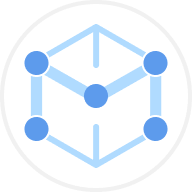Measurable Data Token (MDT) è un progetto che mira a creare un'economia dei dati che consenta agli utenti di condividere, scambiare e monetizzare le informazioni in cambio di incentivi. Come economia dei dati decentralizzata, Measurable Data Token si concentra sul rendere il trading dei dati più etico, orientato al consenso e trasparente. L'esclusivo ecosistema di trading sfrutta la tecnologia blockchain per collegare venditori e acquirenti di dati all'interno di un ecosistema immutabile.
Cos’è Measurable Data Token
Measurable Data Token è un progetto basato su Ethereum che mira ad aiutare gli utenti a ottenere il giusto compenso per i dati che condividono con gli acquirenti. Si concentra sull'eliminazione delle società che sfruttano i dati degli utenti per ottenere guadagni. Il progetto mira a cambiare lo status quo ripristinando il potere nelle mani degli utenti.
La condivisione dei dati viene ricompensata utilizzando i token MDT, una mossa che promuove una distribuzione più equa e aumenta il valore del token nativo.
Il team di Measurable Data Token
Heatherm Huang, cofondatore di MailTime, ha ideato il progetto Measurable Data Token. Huang ha anche creato la Measurable Foundation, un'azienda responsabile della manutenzione di MDT. Oltre a lui, il team di Measurable Data Token vanta numerosi esperti di blockchain e data mining, tra cui l'ingegnere software Wing Chan, l'ingegnere software senior Matt Lung e altri ancora.
Funzionamento di Measurable Data Token
Measurable Data Token si basa sulla trasparenza. Gli acquirenti di dati effettuano richieste a prova di manomissione sulla blockchain. I fornitori di dati richiamano punti di dati specifici dai loro archivi, come i portafogli di dati, utilizzando la loro chiave pubblica e li inviano agli acquirenti. Gli acquirenti hanno accesso solo ai dati che il venditore vuole condividere.
Gli smart contract specifici dell'ecosistema gestiscono le condizioni specificate per tutte le transazioni relative ai dati. I dettagli dello smart contract includono le dimensioni dei dati, la chiave pubblica dell'utente, la percentuale di ricompensa e altro ancora. Il pagamento dei dati avviene solo quando le condizioni dello smart contract sono soddisfatte e le ricompense vengono rilasciate secondo il codice.
Token nativo di Measurable Data Token: MDT
MDT è il token nativo dell'ecosistema Measurable Data Token. MDT è un token ERC-20 compatibile con la maggior parte dei cold e hot wallet. I token hanno un tetto massimo di fornitura di 1 miliardo, assegnato come incentivi e ricompense. Poiché c'è un limite massimo all'offerta, si prevede che il modello economico dei token passi da disinflazionistico a deflazionistico, poiché è comune che alcuni token si perdano tra i vari portafogli.
Casi d’uso di MDT
MDT è un componente fondamentale dell'ecosistema Measurable Data Token. Il suo principale caso d'uso è quello di ricompensare gli utenti per la condivisione dei dati, funzionando essenzialmente come una forma di pagamento. Ad esempio, i token MDT incentivano gli utenti che vendono i loro dati a società di gioco e ad altre imprese per aiutarle nelle analisi di mercato.
Inoltre, i token MDT hanno altri casi d'uso, tra cui la capacità di facilitare le transazioni di dati all'interno dell'ecosistema, un ruolo nella governance della piattaforma e la possibilità di guadagnare ricompense per lo staking offrendo liquidità basata su MDT.
Distribuzione di MDT
I token MDT vengono distribuiti come di seguito indicato:
- 24% al team di MailTime
- 11% ai consulenti e ai primi investitori
- 15% alla pool di crescita
- 35% per gli eventi di distribuzione dei token come gli airdropi
- 15% per la prevendita
Measurable Data Token (MDT) e il futuro dell’economia guidata dalla blockchain
I mercati dei dati sono fondamentali perché consentono agli utenti di entrare in contatto con le aziende, aiutandole a comprendere meglio i mercati. Ma il processo moderno è fortemente centralizzato. Measurable Data Token mira a cambiare tutto questo offrendo un mercato dei dati decentralizzato e sufficientemente innovativo da trasformarsi in una nuova economia.













